Globalstar to Deliver 5G Private Networks and Services Powered by Qualcomm 5G RAN Platforms
Tuesday, 07 March 2023 05:15 Globalstar, Inc. (NYSE American: GSAT), a leading telecom infrastructure provider, has signed a strategic collaboration agreement with Qualcomm Technologies, Inc. involving a portfolio of 5G Private Network technologies, including Qualcomm FSM 5G RAN Platforms for small cells, as well as select Qualcomm Snapdragon Modem-RF Systems, supporting Rel 15/16, that will utilize Globalstar Band n53 terr
Globalstar, Inc. (NYSE American: GSAT), a leading telecom infrastructure provider, has signed a strategic collaboration agreement with Qualcomm Technologies, Inc. involving a portfolio of 5G Private Network technologies, including Qualcomm FSM 5G RAN Platforms for small cells, as well as select Qualcomm Snapdragon Modem-RF Systems, supporting Rel 15/16, that will utilize Globalstar Band n53 terr Radio interference from satellites is threatening astronomy but there are solutions
Tuesday, 07 March 2023 05:15 Visible light is just one part of the electromagnetic spectrum that astronomers use to study the universe. The James Webb Space Telescope was built to see infrared light, other space telescopes capture X-ray images, and observatories like the Green Bank Telescope, the Very Large Array, the Atacama Large Millimeter Array and dozens of other observatories around the world work at radio wavelengths
Visible light is just one part of the electromagnetic spectrum that astronomers use to study the universe. The James Webb Space Telescope was built to see infrared light, other space telescopes capture X-ray images, and observatories like the Green Bank Telescope, the Very Large Array, the Atacama Large Millimeter Array and dozens of other observatories around the world work at radio wavelengths AST SpaceMobile Announces Teaming Agreement with Fairwinds Technologies
Tuesday, 07 March 2023 05:15 AST SpaceMobile Inc. (NASDAQ: ASTS), the company building the first and only space-based cellular broadband network accessible directly by standard mobile phones, has announced a teaming agreement with Fairwinds Technologies LLC to explore potential opportunities to jointly market AST SpaceMobile's planned services and innovative satellite technologies to the military market.
Fairwinds dev
AST SpaceMobile Inc. (NASDAQ: ASTS), the company building the first and only space-based cellular broadband network accessible directly by standard mobile phones, has announced a teaming agreement with Fairwinds Technologies LLC to explore potential opportunities to jointly market AST SpaceMobile's planned services and innovative satellite technologies to the military market.
Fairwinds dev Japan H3 rocket fails, destruct command issued
Tuesday, 07 March 2023 01:47 Japan's next-generation H3 rocket failed after liftoff on Tuesday, with the space agency issuing a destruct command after concluding the mission could not succeed.
The failure is a blow for Japan's space agency JAXA, after the rocket failed to even lift off on its first try last month.
Tuesday's launch from the Tanegashima Space Center in southwestern Japan initially appeared to be a su
Japan's next-generation H3 rocket failed after liftoff on Tuesday, with the space agency issuing a destruct command after concluding the mission could not succeed.
The failure is a blow for Japan's space agency JAXA, after the rocket failed to even lift off on its first try last month.
Tuesday's launch from the Tanegashima Space Center in southwestern Japan initially appeared to be a su Ukrainian government criticizes Vega C investigation
Tuesday, 07 March 2023 00:17
The Ukrainian government claims that European investigators were “premature” in concluding that a component from a Ukrainian company was the blame for the failed Vega C launch last December.
Investors in space startups see hurdles in defense market
Monday, 06 March 2023 21:16
In some sectors of the space industry, innovative technologies from startups don’t stand much of a chance to be part of a DoD program due to institutional and cultural barriers, said Jordan Noone, co-founder and general partner of Embedded Ventures.
NASA's Curiosity views first 'sun rays' on Mars
Monday, 06 March 2023 18:30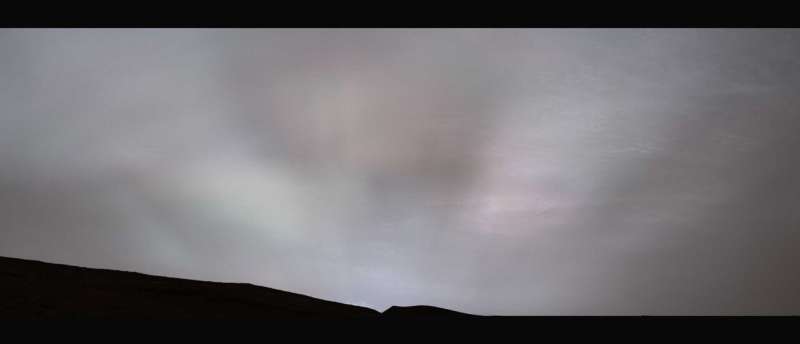
Martian sunsets are uniquely moody, but NASA's Curiosity rover captured one last month that stands out. As the sun descended over the horizon on Feb. 2, rays of light illuminated a bank of clouds. These "sun rays" are also known as crepuscular rays, from the Latin word for "twilight.
Climate change is launching a mutant seed space race
Monday, 06 March 2023 16:55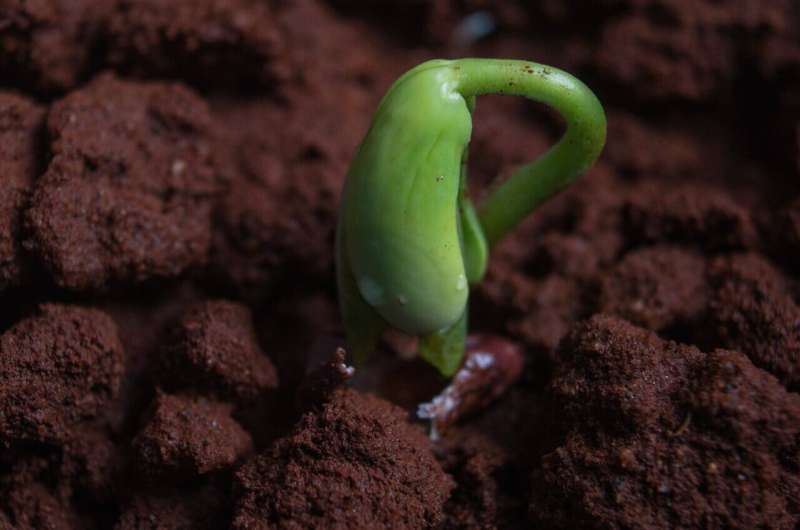
Hurtling around the Earth at more than 20 times the speed of sound, some of the tiniest life forms aboard the International Space Station are on a mission to feed people on a warming planet.
Seeds of sorghum and cress launched into orbit by the International Atomic Energy Agency are tethered to the capsule via a thin metal box. That's exposing them to more-intense solar radiation in a trial to induce genetic mutations so they can survive hotter temperatures, drier soils, spreading pestilence and rising sea levels.
"Most astrobotany until now has been to test how plants can be grown to feed astronauts for eventual space colonies," Shoba Sivasankar, the IAEA's head of genetics and plant breeding, said at her lab outside Vienna. "This experiment is different because it is designed to help people on Earth adapt to climate change."
Farmers from Argentina to California, France and India are struggling to maintain yields amid global warming, with rising prices for the key crops used to bake bread weighing on political stability. Drought gripping North Africa is curbing local wheat harvests, potentially boosting demand in one of the world's top import regions.
Working together to make a difference
Monday, 06 March 2023 16:00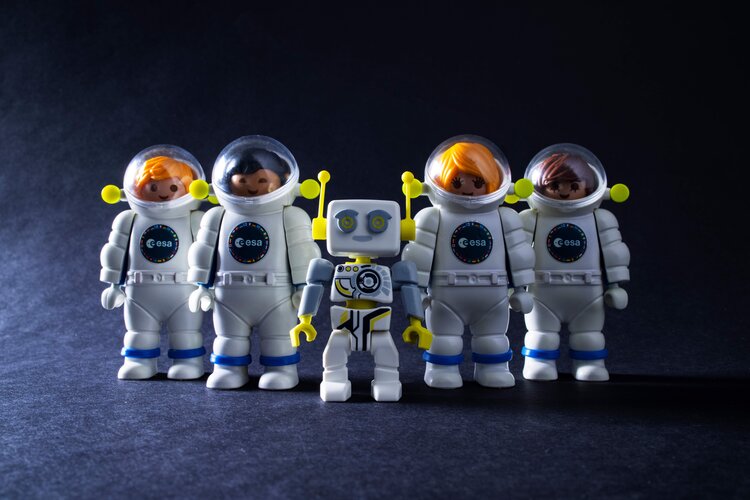
A partnership between ESA and PLAYMOBIL continues to inspire and educate children about space. It also helps to support the children’s humanitarian organisation UNICEF and its work with vulnerable children around the world.
NASA delivers hardware for commercial lunar payload mission
Monday, 06 March 2023 15:02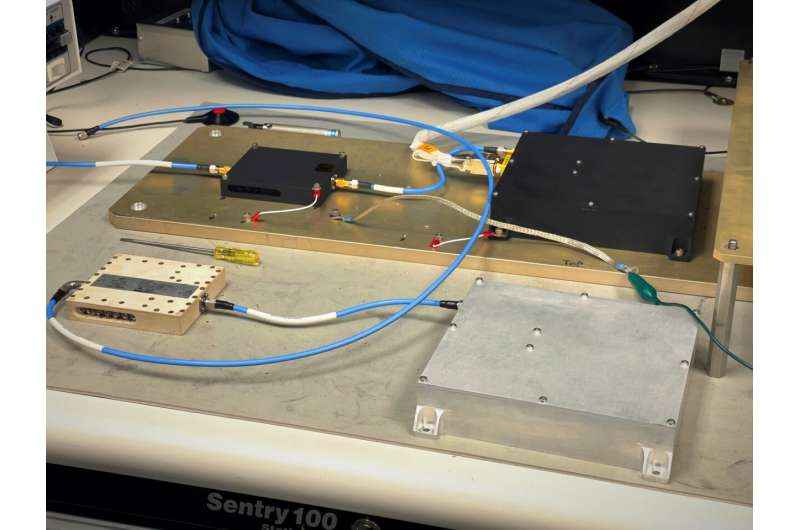
Ever wondered how your phone knows exactly where you are? Or how it can provide directions from one place to another?
In the United States, we rely on the Global Positioning System (GPS)—a satellite constellation orbiting Earth that provides precise location and timing information. What a lot of people don't know is that GPS is just one constellation of location and timing satellites. There are currently six GPS-like systems, known as global navigation satellite systems, or GNSS, that provide navigation services to Earthlings traveling the globe.
But what if we could use these Earth-based systems beyond our planet?
In 2024, as part of the NASA Commercial Lunar Payload Services (CLPS) initiative, Firefly Aerospace will land the "Blue Ghost" lander on the lunar surface.
How Galileo works - infographic
Monday, 06 March 2023 13:01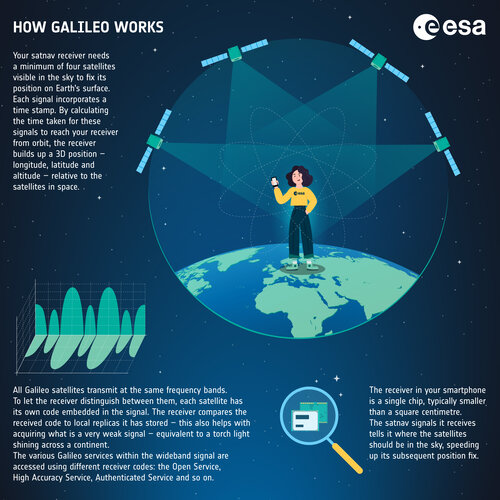 Image:
How Galileo works - infographic
Image:
How Galileo works - infographic HydroGNSS twice as good
Monday, 06 March 2023 12:57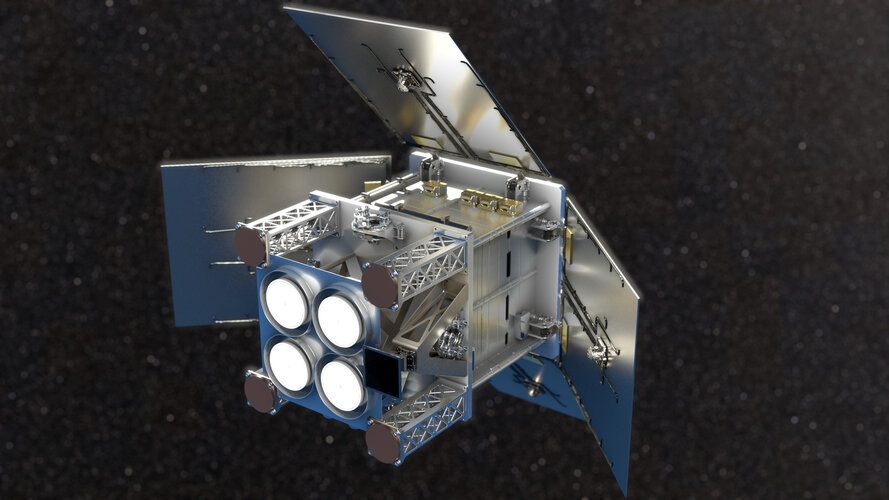
ESA’s HydroGNSS mission will now comprise two identical satellites to halve the time it takes to revisit the same place on Earth’s surface and re-measure various climate variables such soil moisture. Having two satellites in orbit will significantly improve the science that this exciting new Scout mission will yield.
NASA shifts focus of suborbital crew program
Monday, 06 March 2023 12:21
A NASA program originally intended to fly astronauts on commercial suborbital vehicles has evolved into a broader effort to enable flights by agency personnel and supporting the nascent industry.
Lonestar raises $5 million for lunar data centers
Monday, 06 March 2023 10:00
SAN FRANCISCO – Lonestar Data Holdings raised $5 million in seed funding for its plan to establish lunar data centers. Scout Ventures led the round.
China plans robotic spacecraft to collect samples from asteroid
Monday, 06 March 2023 04:42 The Chinese government has approved a plan to send a robotic spacecraft to collect samples from an asteroid, according to the China National Space Administration's Lunar Exploration and Space Program Center.
The mission, called Tianwen 2, is designed to launch a probe to obtain samples from the 2016 HO3, the smallest and closest "quasi-satellite" to Earth, and bring them back. After accomp
The Chinese government has approved a plan to send a robotic spacecraft to collect samples from an asteroid, according to the China National Space Administration's Lunar Exploration and Space Program Center.
The mission, called Tianwen 2, is designed to launch a probe to obtain samples from the 2016 HO3, the smallest and closest "quasi-satellite" to Earth, and bring them back. After accomp 
